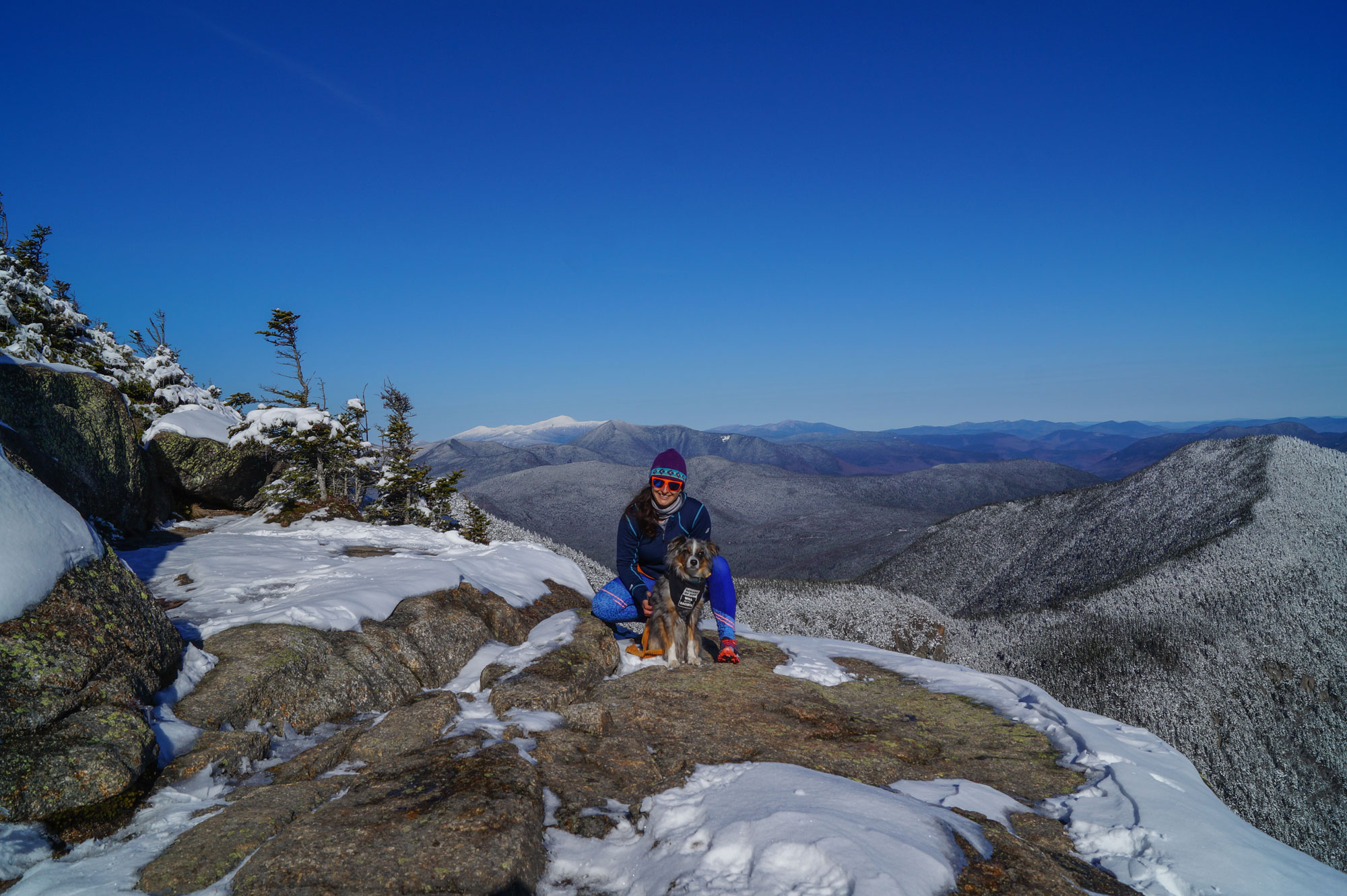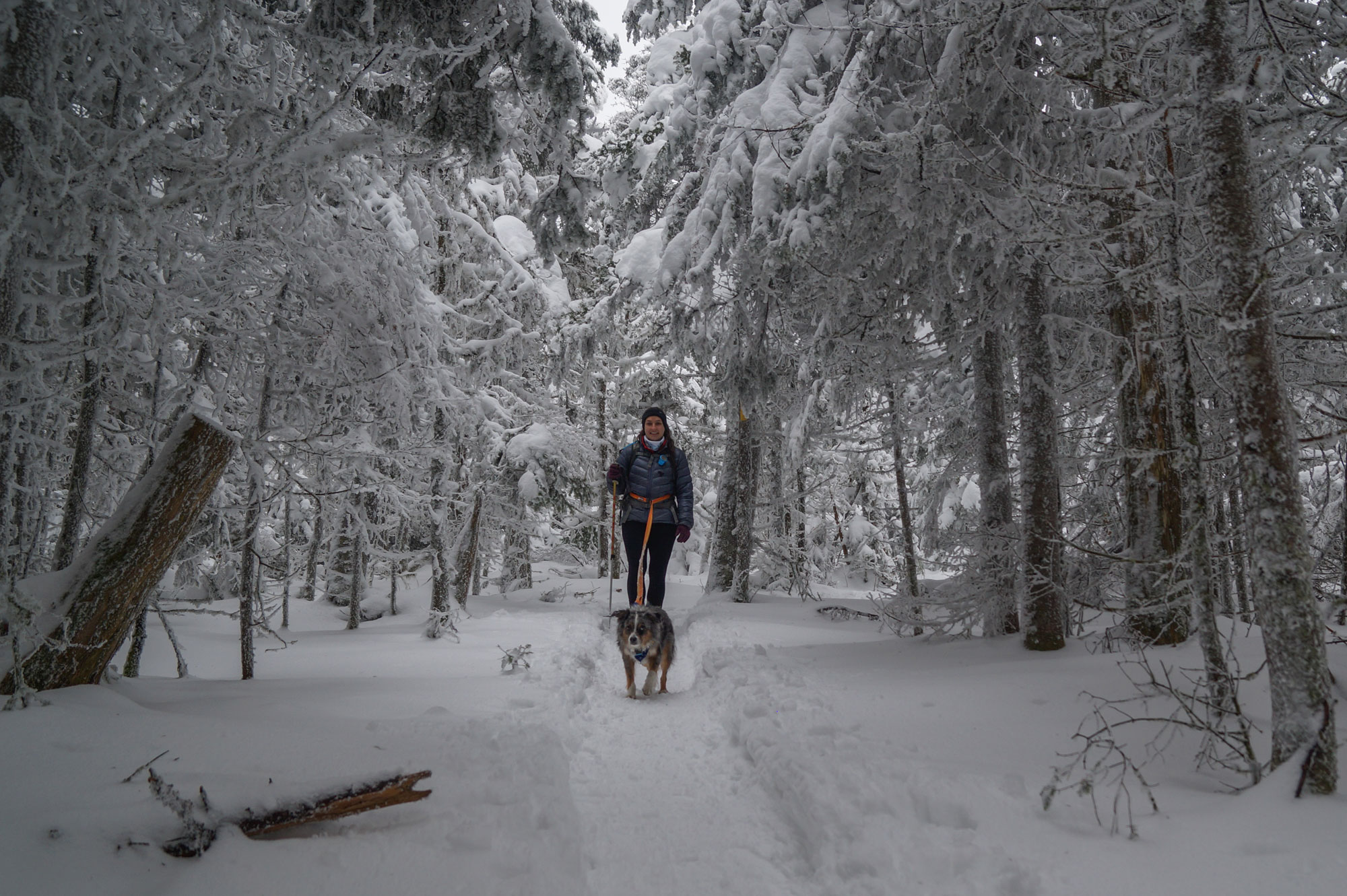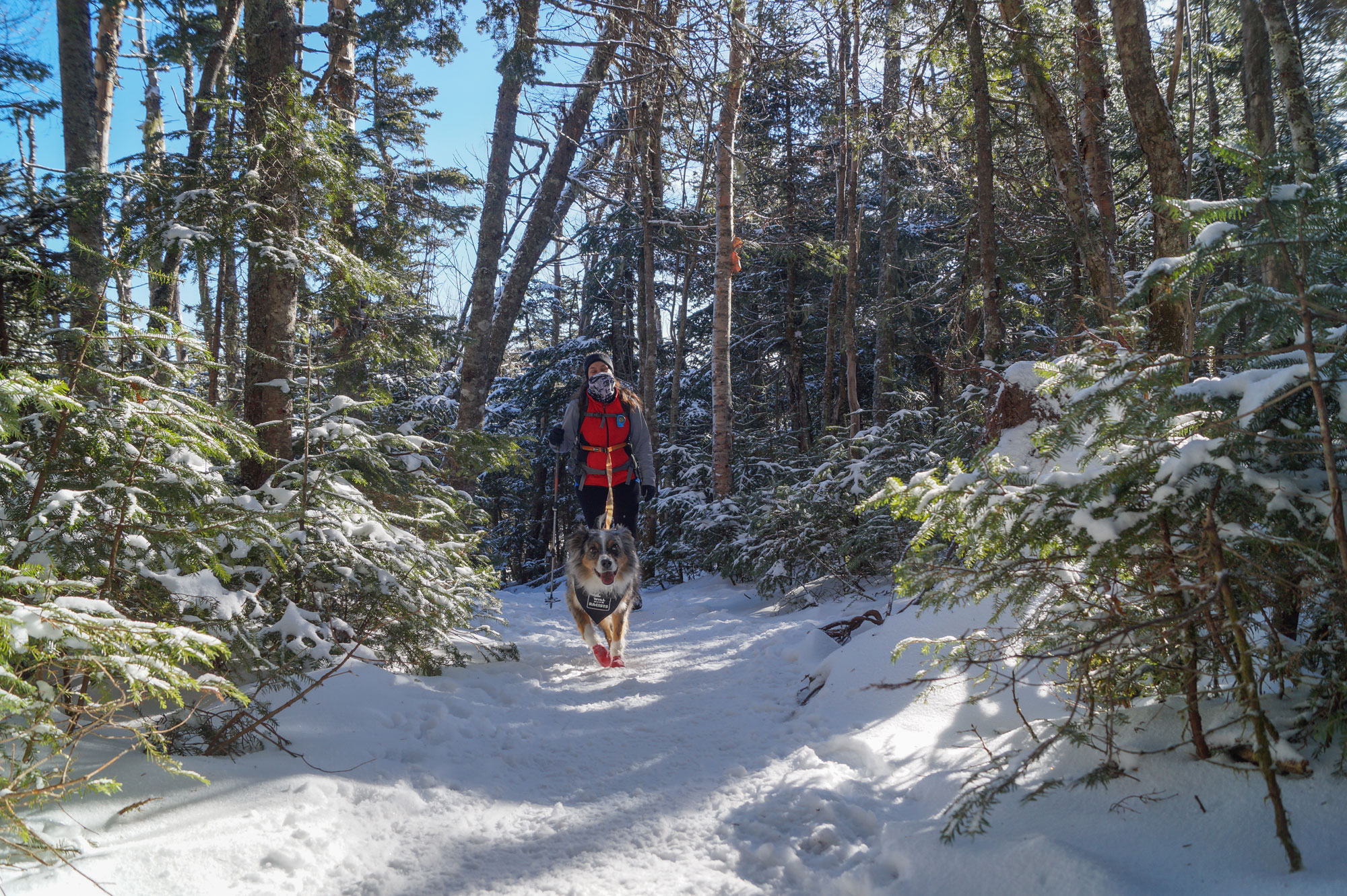Hiking with your dog is a great way for you and your furry friend to get some exercise, bond, and share an experience outside. And just because the snow starts to fall, doesn’t mean the outdoor adventures need to stop. Similar to hitting the trail with your human hiking partners, taking your canine companion hiking in the winter simply requires a little bit more thought, preparation, and gear. Below are ten tips to have fun, stay safe, and help you and your good boy/girl enjoy New England’s winter wonderland.

1. Set Boundaries
Before heading out for a winter hike, know the amount of exercise your dog is capable of and its tolerance for cold weather. Puppies, senior dogs, and smaller canines are more susceptible to cold weather. The breed of dog will also factor into what type of hike is appropriate. Dogs like Siberian Huskies are bred for cold-weather and thrive in winter conditions. Conversely, the short single coat found on dogs like Vizslas means they get cold quickly and have less protection against snow-related injuries.
Not sure how far or how long to go? Start slow with small local hikes to learn what you’re capable of as a hiking team and build up to longer, more challenging winter hikes.
2. Know the Signs of Hypothermia
Don’t let your four-legged friend’s fur coat fool you—dogs can get hypothermia, and it’s just as dangerous to dogs as it is to humans. When hiking with your dog, it’s vital to know the signs of hypothermia and keep an eye out for them:
- Noticeable shivering
- Frequent stopping/lack of energy
- Trouble walking/stiff muscles
- Lack of coordination
- Shortness of breath
- Decreased heart rate
- Pale or gray gums
- Fixed and dilated pupils
If your dog is showing signs of hypothermia, get them out of the cold quickly. Dry them off and slowly warm them up with your vehicle’s heater and blankets. Don’t go too fast, as it can shock their system. If your dog experiences hypothermia, it’s recommended that you take them to the vet for a checkup.

3. Have a Plan B
It’s okay to go to the mountain with a goal, but it’s also important to have a shorter, drier, more protected plan in place if the conditions don’t line up. That exposed ridgeline or above-treeline summit you’ve been dreaming about isn’t going anywhere, and pushing your luck in winter can have huge consequences. If the conditions are really harsh, consider an activity closer to home or just opt to kick it on the couch.
4. Protect Their Paws
Booties provide the most protection for your dog’s paws from snow, ice, and freezing cold rock. Don’t wait until you’re at the trailhead to introduce booties, though; Get your furry friend accustomed to wearing them before hitting the trail. (And start early! It’s much easier to get a puppy comfortable wearing booties than an older dog.) Be aware that snow can work its way into booties and freeze near the top of them, so it’s a good idea to stop and check them often.
Some dogs may not need booties or are simply too stubborn to wear them. If going paw naturel, consider coating your dog’s paws in a paw wax, like Musher’s Secret. This will help prevent snow and ice from collecting between their toes and on their pads, which is painful and irritating. Apply it at the trailhead to avoid making a mess of your vehicle and to keep your dog from licking it off on the way.

5. Layer Up
For some dogs, a winter coat is a necessity and for others, it’s a contingency in case of an emergency. Your dog’s coat will likely get wet from hiking through the snow, so choose something with a water-resistant shell and synthetic insulation to keep your pooch warm even when wet. Fit is key, you want your dog’s jacket snug—so it doesn’t drag on the ground—but not so tight that it restricts their movement.
6. Carry an Insulated Pad
Pack an insulated pad specially designed for dogs or a section of a closed-cell foam sleeping pad. This gives your dog a chance to get off the cold ground, warm up during breaks, and avoid hypothermia.
7. First Aid
Build a winter-specific first-aid kit especially for your four-legged friend. Include extra paw wax or a set of booties, just in case. Other Fido-friendly additions include a styptic pencil to stop any bleeding and dog aspirin for pain relief. Also consider throwing an emergency blanket in your dog’s first aid kit, in the event of an accident or if you see hypothermia setting in, as well as an emergency rescue sling in case you end up needing to carry your pup back to the car due to injury or illness.

8. Winter-Ready Snacks
Like us, dogs burn more calories in winter than they do in warm weather, so make sure to pack plenty of food and keep treats handy. Look for food that won’t freeze when the temperature drops or keep it near your body—rather than in your pack—so your body heat keeps it warm.
Keeping your dog hydrated is also important. Snow isn’t adequate for keeping your dog hydrated, since it requires too much energy to turn it from a solid to a liquid. Consequently, it’s important to pack your pup water and make sure it doesn’t freeze—an insulated water bottle or wrapping a bottle in a puffy coat is a good solution. Another option is to pack a warm dog broth in an insulated thermos.
9. Up-to-date ID
In the event you and your dog get separated, make it as easy as possible for the two of you to get reunited. Make sure your dog’s ID contains their current information and has your cell phone number and a secondary contact written somewhere on their collar so when your dog does turn up, someone can let you know. Always practice good doggie trail decorum.
If you spend a lot of time outdoors with your pup, it’s also worth considering a GPS collar. It provides peace of mind and if your dog gets away from you in the outdoors, you can use the GPS to track them down.
10. Have Fun!
Both you and your dog should have fun hiking. Preparing for the worst, making smart decisions, and staying vigilant are good steps to keeping your powderhound happy this winter.
Tim Peck and Doug Martland
Tim and Doug met long ago at the Eastern Mountain Sports in Canton, Massachusetts. Bonding over a love of slick Quincy Quarry granite, White Mountain sufferfests, and scheming up adventures while folding tee-shirts, today Tim and Doug collaborate to write about their favorite outdoor activities and occasionally get nostalgic about tee-shirt tables.
Related Posts
April 2, 2024
10 Tips for Mountain Biking Etiquette During Mud Season
One rough spring could ruin the…




